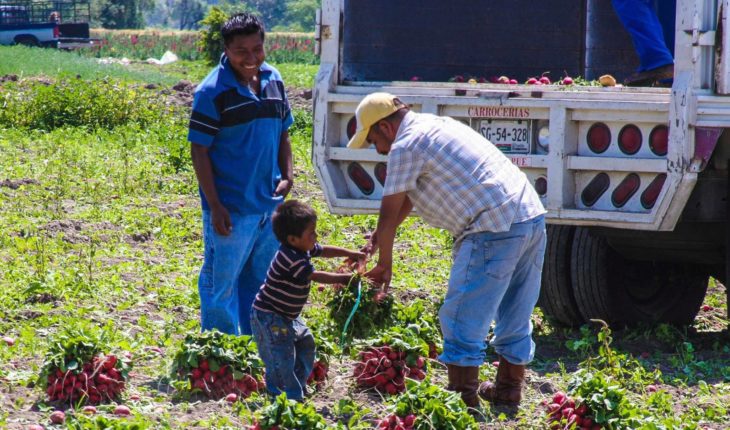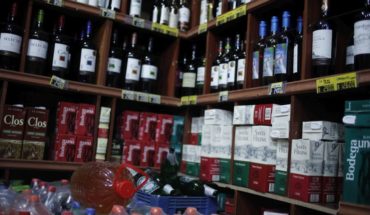Mexico is the second country in Latin America and the Caribbean with the highest prevalence of child labour. A total of 2 million 217 thousand 648 children and adolescents work, equivalent to a 7.5 per cent of the child population of the country.
The above was given to know by the Economic Commission for Latin America and the Caribbean (ECLAC) through its progress report on the progress and the regional challenges of the 2030 Agenda for sustainable development.
This agenda is a commitment signed by 193 countries that contains 17 targets through which it is intended, by the year 2030, eradicate poverty; malnutrition; ending hunger; ensure health; reducing inequalities; providing quality education; have decent jobs, among other objectives.
Read: Children working to live (Photogallery) to four years of having signed the Agenda 2030, Mexico has worked and given tracking to most of the commitments, with some exceptions.
The issue that should be of concern to Mexico is that of child labour, which is placed as the second country in the region with more cases, just below Brazil and Peru.
In 2016, according to estimates of the International Labour Organization, in Latin America and the Caribbean, were some 10.5 million children and adolescents in situation of child labour (from 5 to 17 years), equivalent to 7.3 percent of the regional population.
“For millions of children and adolescents (…) child labour leaves traces that last a lifetime”, therefore the 2030 Agenda requests” take immediate and effective measures to eradicate forced labour, to end slavery and human trafficking and ensure the prohibition and elimination of the worst forms of ” child labour”.
This issue corresponds to the commitment of “decent work”, which, the Government of Mexico has the goal of “achieving full and productive employment and decent work for all men and women, including young people and people with” disability”.
Read also: 10.5 million children victims of child domestic labour
improvements in manufacturing and economic recovery
the ECLAC underscores that Mexico is one of the countries of Latin America and the Caribbean that has served the commitments to through the creation of mechanisms focused on compliance.
Among the actions made by the Government is a guide to incorporate the approach of the 2030 Agenda in State and municipal plans and the information system of the objectives of sustainable development (SIODS), developed in conjunction with the coordination Strategy Digital national of the Office of the Presidency of the Republic and the National Institute of statistics and geography (INEGI).
Is also with the national strategy for the implementation underway 2030 agenda and have been held five regional forums with civil society, the National Institute of Social Development (INDESOL), the Secretariat of Foreign Affairs (SRE) and the Mexican Agency International cooperation for development (AMEXCID).
These actions contribute to the diagnosis, formulation of public policies, allocation of a budget and the monitoring of the fulfilment of the objectives.
In 2018, the 80.7% of the budgetary programs of Mexico covered issues linked with the fulfillment of the 2030 calendar.
In 2016 and 2018, Mexico presented, on a voluntary basis, two national reports on the political high level Forum, which showed progress in the achievement of the established goals.
In June, 2018, with the coordination of the National Conference of Governors (CONAGO), 31 of the 32 States had the legal basis for the establishment of the mechanism for follow-up on the Agenda at the State level and 29 of them had constituted them formally.
In recent years Mexico improved production and export to regional level, thanks to agriculture, fishing, mining and certain industrial sectors such as the electronics industry.
Formal employment has had a low growth in Latin America from 2014 and a slow recovery in the past two years. In Mexico takes place otherwise, every time that the economy and the labor market benefited from economic recovery of United States.
Mexico has also made significant progress in reducing malnutrition in children since 1990, along with Bolivia, El Salvador and Peru, while at the regional level is observed a slight increase in the prevalence of overweight and obesity in children.
Other items that were seen are the infant mortality; access to health; adequate sexual and reproductive health services, and prevention and care of virus as the zika and chikungunya.
Regarding the protection of natural areas and sustainable use, Mexico and Brazil are the countries with the largest number of protected areas, and have effective systems to prevent deforestation.
Otherwise happens in port activities and fishing. In 2012, Chile, Mexico and Peru, altogether, captured little more than 11% of the total of world fisheries. These three countries are among the 18 that concentrated about 80% of world fisheries catch.
According to the Regional Observatory’s planning for the development of Latin America and the Caribbean countries have attended the commitments are: Argentina, Brazil, Colombia and Paraguay.
The official presentation of the progress report on the progress and the Agenda 2030 regional challenges, will be in the Forum of the countries of Latin America and the Caribbean which will take place in Santiago de Chile from 22 to 26 April and which will be attended by representatives of the Government of Mexico.
Thanks for reading! Help us to continue with our work. How? You can now subscribe to political Animal on Facebook. With your monthly donation, you will receive special content. Find out how to subscribe here. Check our list of frequently asked questions here.
translated from Spanish: Mexico, the second with more child labour in Latin America
April 12, 2019 |





